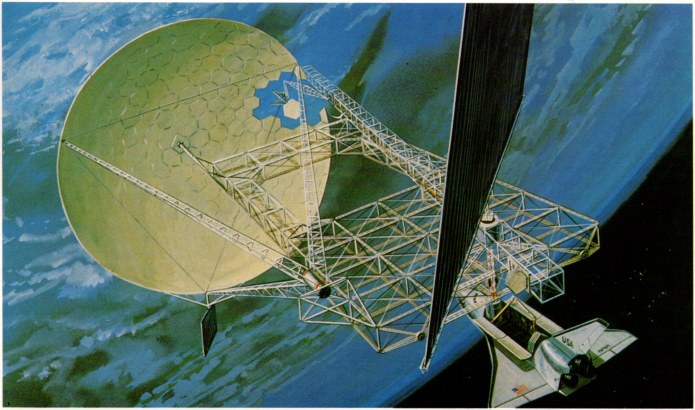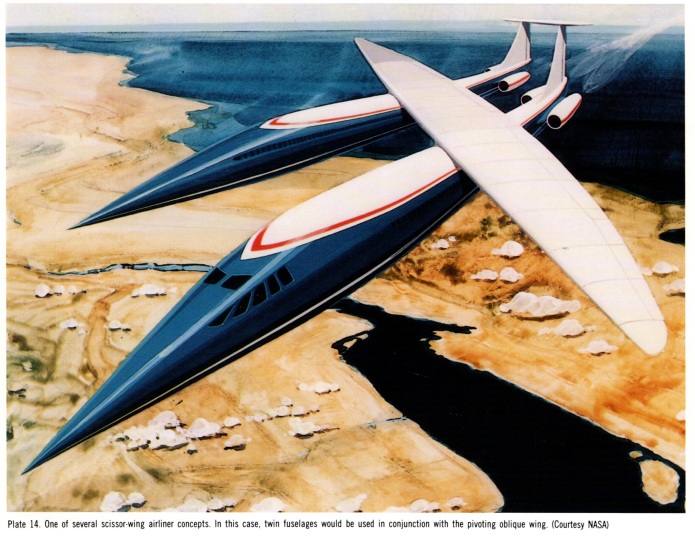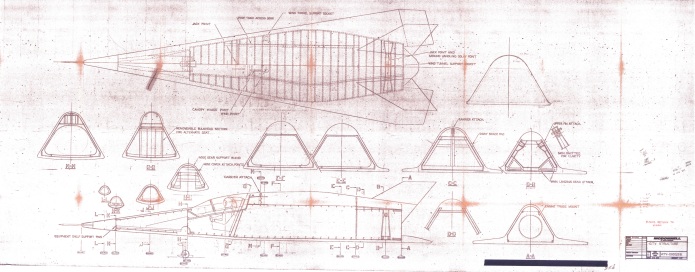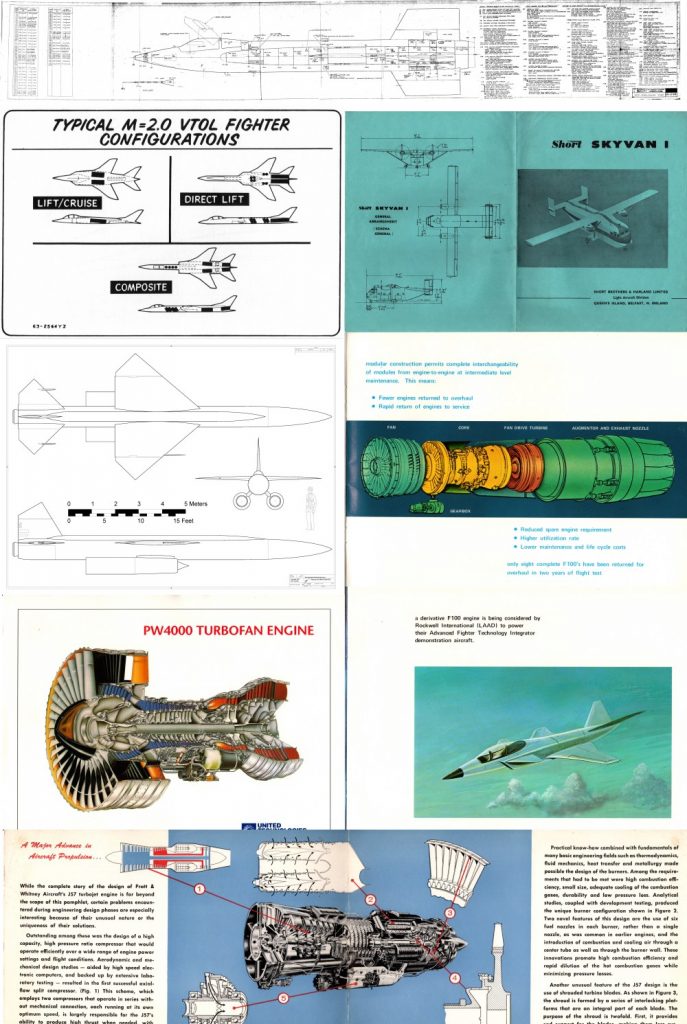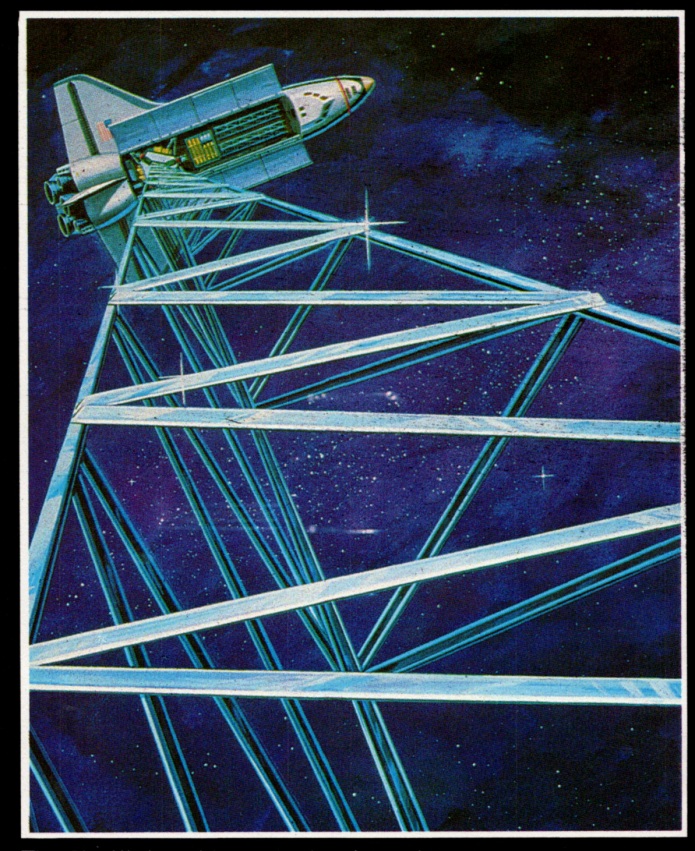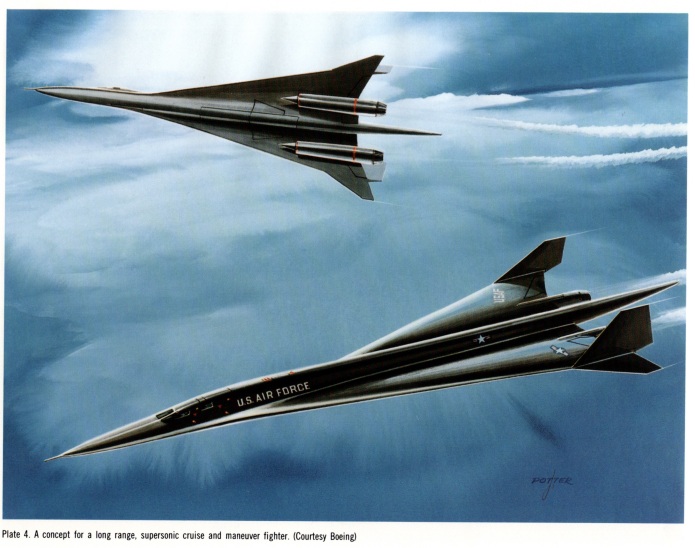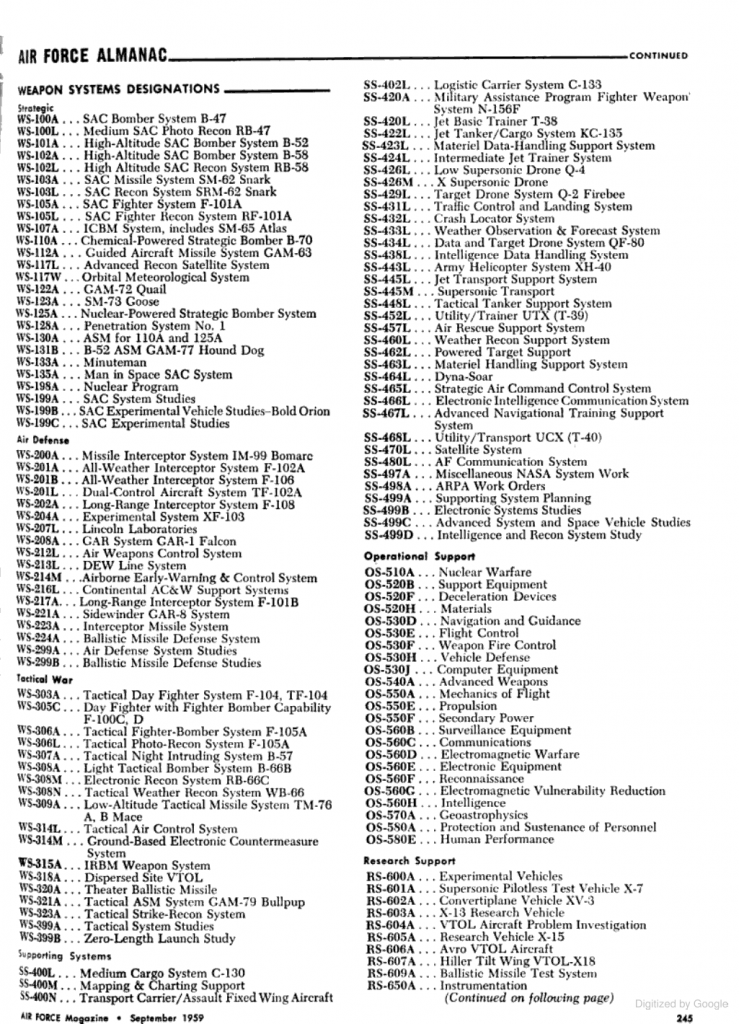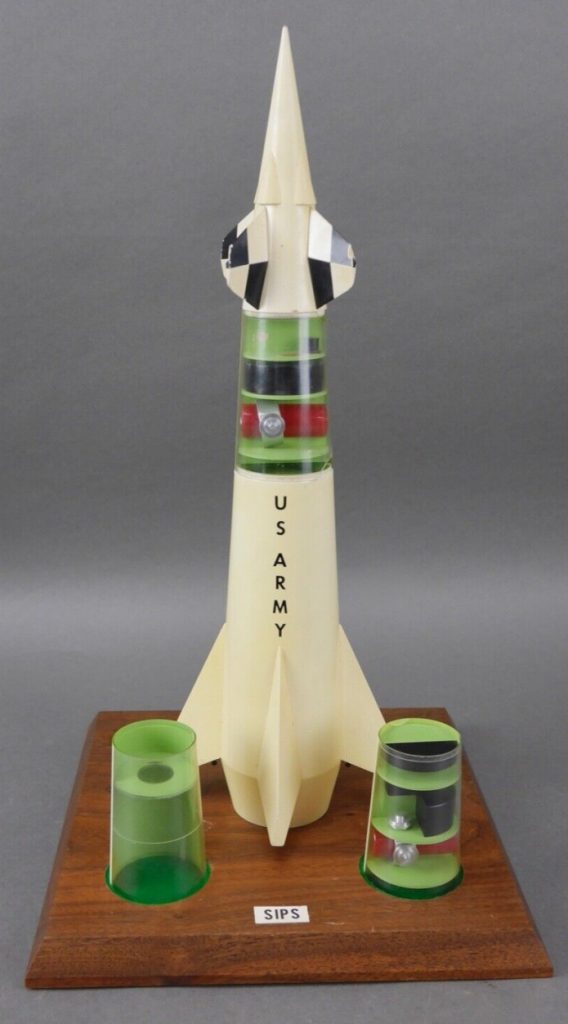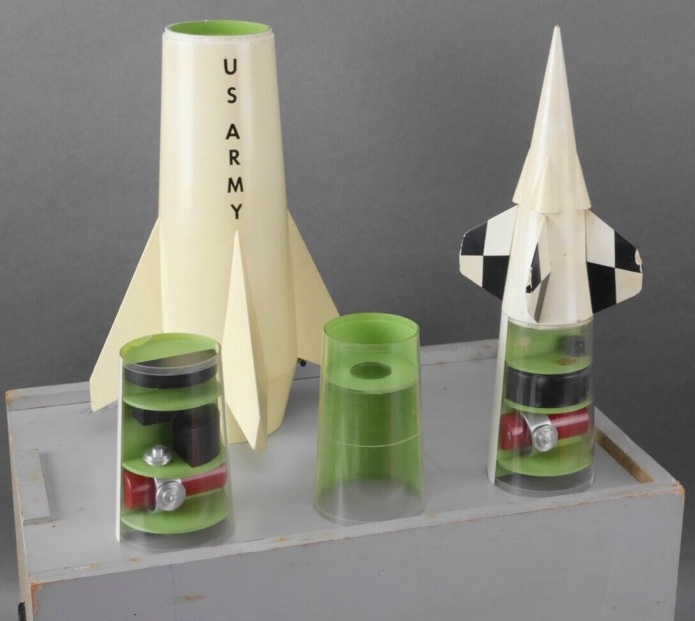A piece of artwork attributed to the DoD (1984 or before) depicting a large structure being built in space. Since it’s DoD, it is most likely a surveillance or mapping radar system of some kind, or an electronic listening system. Since it doesn’t seem to have either large PV arrays or a nuclear reactor – at least not yet at this stage in construction – I’d lean towards it being a listening system. Of course, a great deal more stuff may have been added to it after this… assuming it’s an actual design and not pure art.
Before the RAH-66 Comanche, there was the LHX (Light Helicopter Experimental) program of the 1980’s. Initially the need was broadly defined, and companies such as Bell interpreted it to include the possibility of single-seat combat tiltrotors. The Bell Advanced Tiltrotor (BAT) was one such design. It was design for battlefield surveillance, ground attack/anti-tank… and for blowing Soviet Hinds out of the sky. Whether a tiltrotor could be made that could be safely handled by a single pilot while doing all that craziness is far from certain, especially with 80’s-tech, but the design was certainly appealing. Unlike attack helicopters and F-18’s, the BAT could escort the V-22 on its missions.
Clearly the overall configuration has a great deal of similarity to the XV-15 and the V-22.
A 1970’s Boeing concept for a variable geometry supersonic transport. Once the Boeing 2707 was cancelled in the wake of the oil crisis, any further work on supersonic transports focused heavily on “how do we make this more fuel efficient.” One approach was to go back to variable geometry, which had been dropped from the SST program when the 2707-200 was replaced with the 2707-300. The swing-wing of the -200 worked wonders for the low speed performance of the aircraft, but played hell with cost and weight, enough so that the -300 had a fixed modified delta wing.
The solution shown below linked a few technologies. One concept that showed promise was the “oblique wing,” as tested on the AD-1. A single-piece stricture connected to the fuselage at a single pivot point; much lighter and simpler than a traditional two-pivot swing-wing. With sufficiently rigid structures – think “carbon fiber” – the forward-swept portion could remain reasonably flat even at high speed. But this concept went one step further and linked *two* fuselages to not only a single oblique wing, but also an oblique tail. This would put the “aft” fuselage behind the shock wave shed off the nose of the “forward” fuselage, greatly reducing drag. You’d have the capacity of two SSTs for the operating cost of little more than one. Neat idea… very complex. I’m not sure if it made it much further than preliminary wind tunnel testing.
Full-rez scan uploaded to the 2022-07 APR Extras folder.
Recently APR Patrons/Subscribers and I were able to successfully crowdfund the purchase of a lot off ebay that included a few folders of vintage lifting body work. The chief prize from the lot was a *giant* blueprint of a “GTV Structure,” a manned Model 176/ FDL-7 lifting body test vehicle (“GTV” was not explained, but I suspect it means something like “Glide Test Vehicle,” designed to be dropped from an NB-52). Scanning of the lot is underway; the crowdfunders now have access to the blueprint in several forms (full size, halfsize; full color, grayscale).
If you would like to help fund the acquisition and preservation of such things, please consider signing on either for the APR Patreon or the APR Monthly Historical Documents Program.
I’ve just made the June 2022 rewards available for APR Patrons and Subscribers. This latest package includes:
Large format diagram: “X-15 Access Doors.” A North American Aviation diagram from 1956 showing all the openable panels on the port (left) side of the fuselage
Document: “Harpoon Coastal Defense System:” McDonnell Douglas brochure on a truck-launched anti-ship missile
Document: “Harpoon for Fast Patrol Boats:” McDonnell Douglas brochure on anti-ship missiles for small ships
Document: “Shorts Skyvan:” small brochure about the boxy cargo aircraft
Document: “VTOL Design – Turbojet Configurations” Northrop paper on VTOL fighters, mostly a historical review but with basic layouts for designs up to Mach 3
Document: Turbofan propaganda. A number of brochures and data sheets and such on turbofans and turbojets… PW4000, F100, JT9D-7R4, J57.
CAD diagram ($5 and up): IM-99B BOMARC surface to air missile general arrangement
If you would like to help fund the acquisition and preservation of such things, along with getting high quality scans for yourself, please consider signing on either for the APR Patreon or the APR Monthly Historical Documents Program. Back issues are available for purchase by patrons and subscribers.
Prior to Challenger, one piece of technology that was often touted as something that would be deployed by the Space Shuttle was the “beam builder.” This was a mechanism that would take rolls of aluminum “tape” a millimeter or less in thickness and automatically chop, bend, deploy and weld said aluminum into truss structure beams. These beams would be arbitrarily long… useful for building all manner of things, from space stations to radar satellites, on up to solar power satellites. The technology got fairly far along… but once Challenger exploded, the idea of actually using the shuttle to build vast constructs in space kinda vanished, with ISS being the only example of that. And in the case of ISS, very little actual “construction” was carried out, instead the ISS was simply assembled, with parts like the solar panels deploying rather than being built.
But while it lasted, beam builders featured in a lot of concept art, such as the one below depicting a beam being extruded from the Beam Builder in the rear of the Shuttle cargo bay. Irritatingly, I’ve misplaced the book I scanned this from and cannot immediately confirm who to credit it to.
testing…
The Boeing 733 is *reasonably* well known as the designation for the Supersonic Transport before it got re-designated the 2707. However, Model 733 was sort of a catch-all designation for a long (numerically and temporally) series of designs covering the gamut from giant Mach 2+ SST’s down to bombers, strike aircraft and fighters. The link seems to be that the 733 started off specifically as an SST designation; but other aircraft types were designed using the same aerodynamics. A fighter that was basically a scaled-down SST might be a model 733 (such as the Model 733-605). Shown below is a reasonably commonly reproduced piece of art from the 80’s depicting what is sometimes called the Model 606; it’s actually the Model 733-606. I’ve seen diagrams for a number of aircraft based on this basic geometry; the 733-606-11 and 733-606-12 were strike aircraft. The aircraft below is generally described as an interceptor, sometimes as a supercruise research platform.
The full rez scan of this artwork has been uploaded to the 2022-06 APR Extras folder on Dropbox for APR Patrons and Subscribers.
Recently sold on eBay was a display model for a vehicle labeled “SIPS.” No other data was available. However, this appears to be an upper stage modification for the LIM-49 Spartan surface-to-air anti-missile missile. Which suggests that the first “S” in “SIPS” standard for “Spartan.” Perhaps something like “Spartan Integral Propulsion System” or some such. However, this seems to appear to be a complete vehicle…. the very large first and second stage motors, as well as the warhead section, *appear* to have been replaced with a new, small booster with fins. Perhaps this was meant to test the third stage of the Spartan… or perhaps it was meant to be a way to find some use for the Spartan third stage after program cancellation, as some sort of scientific test vehicle.
The other photos from the ebay auction have been uploaded to the 2022-06 APR Extras folder on Dropbox for Patrons and Subscribers.
The diagram below shows the complete Spartan missile.

